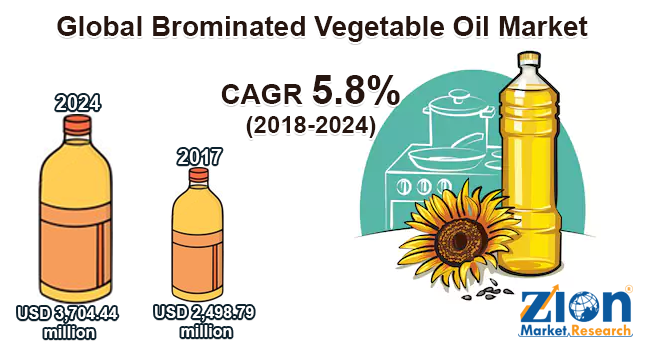Brominated vegetable oil (BVO) is obtained by extraction of corn or soybean oil fat. Brominated vegetable oil is mainly used in sodas and sports drinks as additives and is also used as an emulsifier in citrus fruit drink and soft soda drinks. Since 1931, brominated vegetable oil is used by the food industry. Bromination help to emulsify the flavoring agent with sodas and citrus fruit drink. The flavorings agents (lime, lemon, grapefruit, orange, etc.) which are used in drinks are oily in nature. The flavoring agents used in beverage cannot be blended together thus they form a separate layer in soda and other soft drink. Brominated vegetable oil is used to maintain the dispersion of flavoring agent and soft drink or soda.
The major soft drink producers such as PepsiCo and Coca-Cola make use of brominated vegetable oil in their carbonated soft drinks. In most of the countries, use of brominated vegetable oil in the soft drinks is regulated.
The global brominated vegetable oil market is anticipated to grow at a significant growth rate. In the U.S. the use of the brominated vegetable oil is regulated by the U.S. FDA; it has imposed a limit on the use of BMO which is 15 pmm. Bromine element is used in most of the beverages. Moreover, consumption of brominated soda and soft drink is not safe for the health. The frequent use of BVO soft drink can lead to ptosis of right eyelid, fatigue, loss of memory, tremors, loss of muscles coordination, and headache. All these factors are anticipated to limit the growth of the market.

In addition, there are some soft drinks that contain chemicals such as Yellow Dye #5 and sodium benzoate. These chemicals are banned in Germany, Norway, and Austria as they are hazardous to health.
In 2010, according to the study made by the National Cancer Institute, brominated soda or soft drink is still the number one source of calories for teenagers between the ages of 14 to 18. Amongst adult population, brominated soft drink and other sugary drinks are the fourth largest source of calories, according to the latest dietary statistics from the US Department of Agriculture (USDA).
The global brominated vegetable oil market can be segmented on the basis of applications into bakery products, beverage, and pesticides. The beverage segment is expected to dominate the global brominated vegetable oil market and is expected to maintain this trend over the forecast period. Increasing application of BVO in beverages coupled with the growing consumption of beverage across the globe is expected to drive the demand for brominated vegetable oil in the forecast year.
Based on the region, the market is segmented into North America, Latin America, Europe, the Middle East & Africa, and the Asia Pacific. North America accounted for the most significant share of the brominated vegetable oil market in terms of volume in 2017. This can be attributed to the huge demand for the beverages in the U.S., Canada, etc. The Asia Pacific brominated vegetable oil market is also expected to witness significant growth during the forecast period. Developing countries like China and India have large population base which positively influences the growth of the brominated vegetable oil market during the forecast period.
Some of the major players operating in the global brominated vegetable oil market are Penta Manufacturing Company, Parchem Fine & Specialty Chemicals, and Spectrum Chemical Manufacturing Corp., among others.

